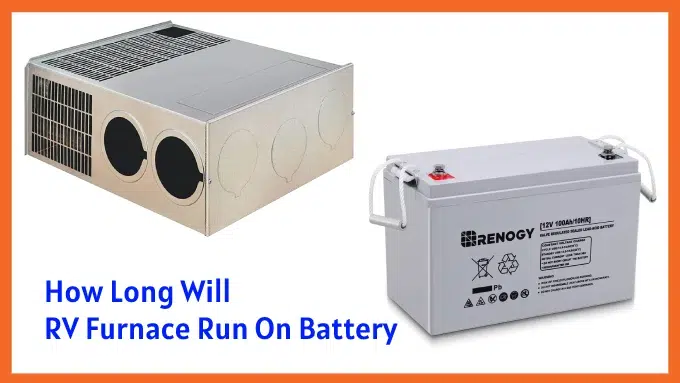Last Updated on April 15, 2023
Are you planning your next RV adventure and wondering how long your furnace will run on battery power? Knowing the answer to this question is important so you can plan accordingly and avoid being left in the cold.
To know how long your RV furnace will run on battery power, you need to think about the size and power of your RV battery, the temperature and weather outside, how often you use it, and the thermostat settings. These things all come into play when figuring out how long it can last.
Here we will briefly discuss these factors and guide how to troubleshoot one, estimate how long your RV furnace will run on battery power, and more. So, sit back, relax, and read on to learn more about RV furnaces and batteries.
How Long Will RV Furnace Run On Battery: Factors Affecting
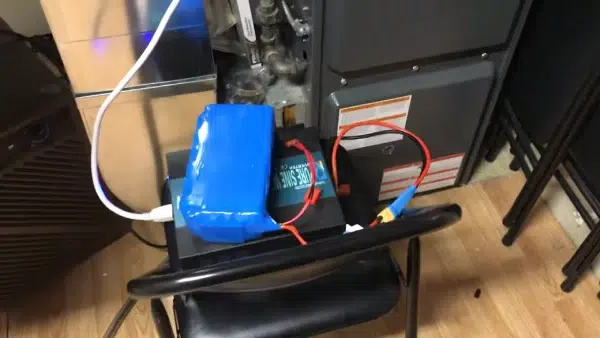
RV furnaces are essential to any camping or road trip adventure, especially during the colder months. But, it is important to understand how long your RV furnace will run on battery power to ensure you don’t find yourself without heat in the middle of the night.
Several factors can affect the lifespan of your RV furnace battery:
Size and Capacity of the RV Battery
The larger the battery, the more power it can store and the longer it can provide power to your furnace.
Most RVs come equipped with a standard lead-acid battery that has a capacity of around 100 amp-hours (Ah). But, this may not be sufficient for extended use of your furnace. If you plan to use your furnace frequently or for extended periods, it may be worth upgrading to a higher-capacity battery.
For example, if you have a 20,000 BTU furnace that runs at full capacity for four hours per day, you would need a battery with a minimum capacity of 200 Ah to power the furnace for one day without any other electrical usage.
It’s important to note that other factors, such as temperature and frequency of use, can also impact the overall battery life.
Temperature and Climate Conditions
If you are camping in extremely cold temperatures, your furnace will have to work harder to keep your RV warm, resulting in more power consumption from your battery.
On the other hand, if you are camping in mild temperatures, your furnace won’t have to work as hard, resulting in less power consumption from your battery. It is imperative to note that even a small temperature change can affect your RV furnace’s battery life.
To ensure you get the most out of your RV furnace’s battery life, it is essential to be mindful of the temperature and climate conditions when using it. You can also reduce the furnace workload by insulating your RV properly.
Also, plan on camping in colder temperatures frequently. It may be worth investing in lithium-ion batteries, as they tend to perform better in extreme temperatures than traditional lead-acid batteries.
Frequency of Use
The frequency of use is a crucial factor affecting the battery life of your RV furnace. The more often you use your furnace, the shorter your battery will last. But this doesn’t mean you should avoid using it altogether.
Instead, finding a balance between comfort and energy efficiency is essential. If you plan on using your RV furnace frequently, consider upgrading to a larger size and capacity battery that can handle the demand. This will allow you to run your furnace longer without worrying about quickly draining the battery.
On the other hand, if you only plan on using your furnace occasionally or during short trips, a smaller battery may suffice. In this case, tracking how long your furnace runs before the battery recharges is essential. This way, you’d better know how much power you need and when to recharge your battery.
Thermostat Settings
The thermostat regulates the temperature inside your RV and controls when to turn the on and off the furnace. If you set the thermostat to a higher temperature, the furnace will run more frequently, which can drain your battery faster.
Setting your thermostat to an appropriate temperature for your needs is important to conserve battery life. For example, if you’re camping in mild weather, you may be able to set your thermostat lower and rely less on the furnace.
On the other hand, if you’re camping in very cold weather, you may need to set your thermostat higher to keep warm.
Another way to extend your RV furnace battery life is by upgrading to a programmable thermostat. This allows you to set different temperatures for different times of day or night to conserve energy when you don’t need as much heat.
Troubleshooting Common Problems with RV Furnace Batteries
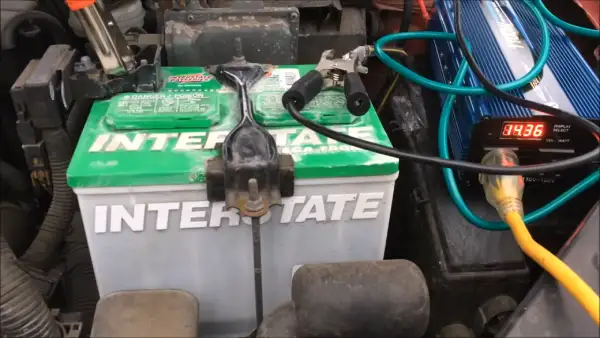
When it comes to RV furnace batteries, some common problems can arise. Understanding these issues and how to troubleshoot them can help you extend the life of your battery and avoid costly repairs.
Battery Drain Due to Parasitic Loads
One of the most common problems that RV owners face when it comes to their furnace batteries is battery drain due to parasitic loads.
This refers to the power consumed by devices in your RV, even when not in use, such as clocks, smoke detectors, and other electronics that continuously draw a small amount of power. These loads can add up over time and eventually drain your battery, leaving you without heat.
To prevent this from happening, it’s essential to identify these parasitic loads and take steps to minimize their impact on your battery life.
One way to do this is to install a battery disconnect switch that lets you completely cut off power to these devices when unnecessary. Alternatively, you can manually unplug each device when not in use.
Short-Cycling of the Furnace
Short cycling of the furnace is another common problem in RVs with furnaces. This happens when the furnace turns on and off frequently, sometimes as often as every few minutes. Not only does this cause discomfort for those inside the RV, but it also puts unnecessary strain on the battery.
There are several reasons why short cycling may occur. One possibility is that the thermostat is not functioning properly and is sending incorrect signals to the furnace. Another possibility is a problem with the furnace itself, such as a dirty air filter or malfunctioning ignition system.
To troubleshoot this issue, start by checking the thermostat settings and setting them correctly. If the thermostat appears to be functioning properly, inspecting the furnace itself for any issues may be necessary.
Sometimes, short cycling may be caused by an undersized battery that cannot meet the furnace’s demands. Upgrading to a larger capacity battery or adding a battery can help alleviate this problem.
Inaccurate Thermostat Readings
Inaccurate thermostat readings can be a common problem with RV furnace batteries. This issue can cause the furnace to turn on and off too frequently, leading to unnecessary battery usage and a shorter lifespan for the battery.
One potential cause of inaccurate thermostat readings is poor placement of the thermostat. If the thermostat is located in an area that experiences temperature fluctuations, such as near a window or door, it may not accurately reflect the temperature inside the RV. This can result in the furnace turning on and off more frequently than necessary.
Another possible issue is a malfunctioning thermostat sensor. Over time, these sensors can become dirty or damaged, affecting their accuracy. If you suspect that your thermostat sensor may be causing problems, it’s important to have it inspected by a professional.
Finally, wiring issues can also lead to inaccurate thermostat readings. If loose or damaged wires are in your RV’s heating system, this can affect how well the furnace communicates with the thermostat. In some cases, rewiring may be necessary to address this issue.
To avoid inaccurate thermostat readings and save your RV furnace battery, it’s important to ensure that your thermostat is properly placed and functioning correctly. Regular maintenance and inspections can help identify potential issues before they become major problems.
How to Calculate RV Furnace Battery Consumption?
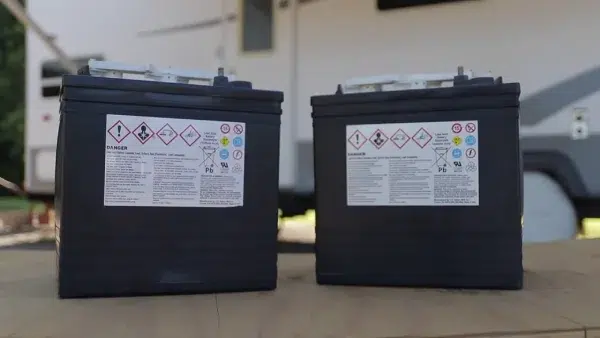
Understanding the battery usage of an RV furnace is crucial for any avid traveler who wants to stay warm and comfortable during their trips. Calculating the RV furnace battery usage requires understanding BTUs (British Thermal Units), wattage consumption, and determining total battery amp hours required.
BTUs are a measure of heat energy. It is essential to know how many BTUs your RV furnace uses per hour to calculate its battery usage accurately.
Wattage consumption is another factor that affects RV furnace battery usage. To calculate wattage consumption, you need to multiply the number of amps by the voltage used by the appliance.
Determining the required battery amp hours involves calculating how long your RV furnace can run on a single charge. To do this, you need to divide the total amp-hour capacity of your battery by the amp draw of your RV furnace.
How Can You Extend Your RV Furnace Battery Life?
If you’re planning to extend the life of your RV furnace battery, there are a few things you can do.
Upgrading to a Lithium-Ion Battery
Upgrading to a Lithium-Ion Battery is one of the best ways to extend your RV furnace battery life. Lithium-ion batteries are an excellent alternative to traditional lead-acid batteries because they have a longer lifespan, faster charging time, and higher energy density.
They also have a lower self-discharge rate, meaning they can hold their charge longer.
One of the most significant advantages of lithium-ion batteries is their weight. They are much lighter than lead-acid batteries, making them ideal for RVs, where weight is always a concern.
And lithium-ion batteries have a higher cycle life, meaning they can be charged and discharged more times than lead-acid batteries before needing replacement.
Another advantage of lithium-ion batteries is their ability to discharge at high rates without damaging the battery or reducing its lifespan. This feature makes them ideal for powering high-demand appliances like RV furnaces.
Using Solar Panels and Generators as Backup Power Sources
When extending RV furnace battery life, using solar panels and generators as backup power sources can be a great solution. This is especially true if you plan on camping in places where there are no electrical hookups available.
Solar panels are a popular choice for RVers who want to reduce their reliance on traditional power sources. They convert sunlight into electricity, which can then be used to charge your RV battery.
The amount of power generated by solar panels depends on several factors, including the size and number of panels you have and the amount of sunlight available.
Generators are another option for powering your RV furnace. You can charge your RV battery with these devices using gasoline or propane.
While generators can be noisy and require regular maintenance, they are a reliable backup power source that can keep your furnace running even when there is no sun.
Properly Insulating Your RV for Improved Efficiency
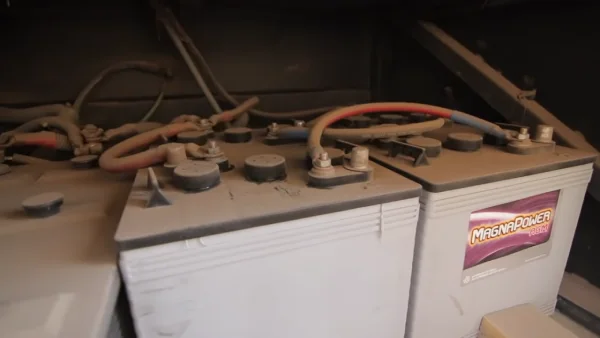
One way to improve insulation is by using thermal curtains or window coverings to prevent heat from escaping through windows. You can also use foam insulation boards on the walls and ceiling of your RV. This will help keep the warm air inside and reduce the energy needed to heat your space.
Another way to improve efficiency is by sealing any gaps or cracks in your RV’s doors, windows, and walls with weather stripping or caulk. This will help prevent cold air from seeping in and warm air from escaping.
Finally, consider investing in an insulating skirt for your RV. This will create a barrier between the ground and the underside of your RV, preventing cold air from creeping in through the floor.
Maximize Your RV Furnace Battery Life
To better understand your RV furnace’s battery usage, it’s important to understand BTUs and how to calculate wattage consumption. Doing so can help you determine the total amp hours required for your specific furnace.
If you’re looking to extend your RV furnace battery life, there are several things you can do. Upgrading to a lithium-ion battery, using solar panels or generators as backup power sources, and properly insulating your RV can all help improve efficiency.
Finally, if you run into any problems with your RV furnace batteries such as parasitic loads draining them too quickly or short-cycling of the furnace itself, troubleshooting these issues is crucial. Inaccurate thermostat readings can also be a problem if not addressed promptly.
So whether you’re hitting the road for a weekend getaway or embarking on a longer adventure across the country, doing what you can to maximize your RV furnace’s battery life is well worth it in the end.

